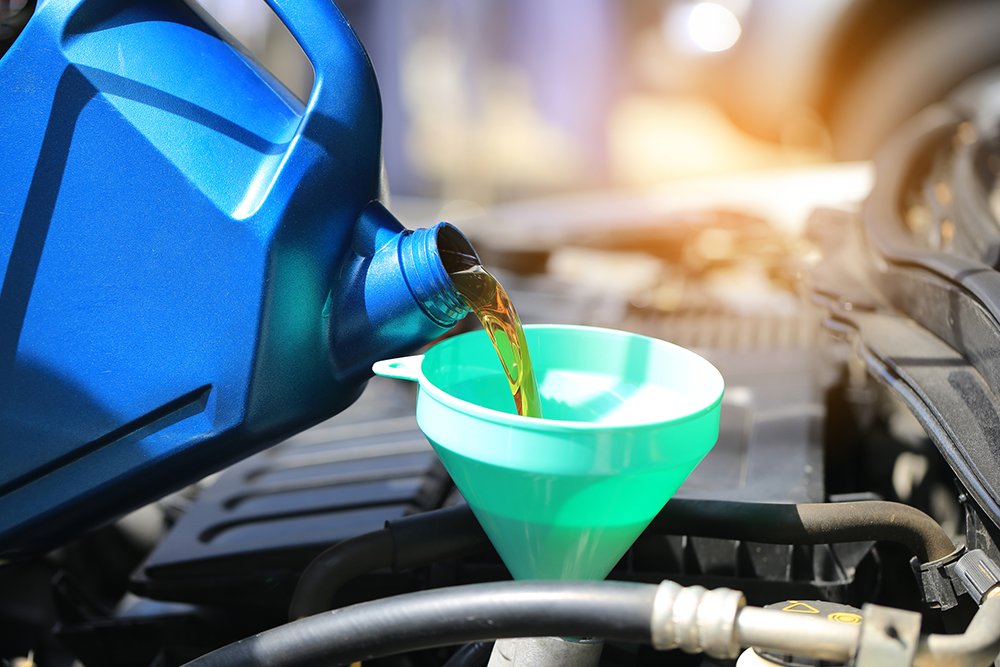Fall service goes beyond simple oil change

Dirt and other pollutants from summer driving can turn clean clear oil into dark and viscous fluid. The contaminants increase wear and tear on your vehicle, and service advisors often recommend an oil change in early fall.
Is a simple oil change service the only item that needs to be on your fall maintenance checklist?
Not if you want to avoid expensive repairs later, said Tony Molla, vice president of communications for the National Institute for Automotive Service Excellence. Preparing for winter’s harsh conditions requires some planning on when and where you expect to travel.
Are all oil changes services the same?
“No,” Molla responded simply.
For example, tires need to be rotated regularly to prevent abnormal wear. The interval is similar to oil replacement—about 5,000 to 7,000 miles. A full service facility with certified technicians may perform tire rotation as part of routine maintenance.
“Certified technicians are trained to spot problems beyond basic oil change and lubrication services,” Molla said. “It’s easy to neglect tire rotation when you are simply looking for the least expensive oil change service.
“Yet, forgetting to rotate tires can cut tread life by more than half.”
The same problem can exist with brake system, battery check and hose inspection. Early warning signs such as worn pads or leaky hydraulic systems can cause more expensive repair down the road if neglected or overlooked during routine maintenance.
“Full service centers generally employ ASE certified and factory-trained technicians and offer a wide range of maintenance services. A lube-only facility generally focuses on oil, fluid and filter services.”
Some vehicles require synthetic motor oil as standard equipment from the factory rather than conventional, refined motor oil. Service intervals for synthetic oil may vary up to 15,000 miles.
“Every vehicle is different as well,” Molla said. “Service operations that have certified technicians are trained in a variety of makes and models.”
Traditionally, oil change services were recommended every 3,000 to 5,000 miles. Most manufacturers recommend a change every 7,500 miles for conventional oils.
“Although important to long vehicle life, simply changing oil is not enough to keep your vehicle operating safely and efficiently,” Molla said. “Your vehicle needs to be inspected at least twice a year by a certified technician.”
Molla also gave some extra tips in determining your need for an oil change:
- Get a multipoint inspection along with your autumn oil change service. This service will help avoid problems that can lead to winter breakdown or malfunction.
- Inspect batteries for charge capacity and terminal corrosion.
- Investigate brake wear. Hot summer driving quickly wears brake pads, and worn pads can make stopping difficult, especially in wet weather.
- Check light bulbs for brightness. Headlights dim over time, and new bulbs can help improve night vision.
- Check the climate control system. Does the air conditioning and heating system respond quickly? Poor performance may signal fluid or thermostat problems.
- Follow manufacturer’s suggested intervals for oil change service. The old rule of thumb—getting an oil change and lube every 3,000 miles—does not necessarily apply to today’s high tech vehicles, particularly if they use synthetic motor oil.
- Driving conditions and style affect oil change intervals. Do you make a lot of stop-and-go driving? Do you drive a lot of dusty roads? Both situations may require more frequent oil change services than long distance, freeway travel. Ask your service technician.
- The type and grade of motor oil recommended for your vehicle can vary from one manufacturer to another. These days, one size does not fit all when it comes to motor oil. Check your owner’s manual to make sure you are using the correct type of motor oil for your vehicle.
- Does your vehicle require synthetic oil? Some advanced engines now require highly specialized grades of man-made oil that may not be substituted for traditional oil. Check your owner’s manual.